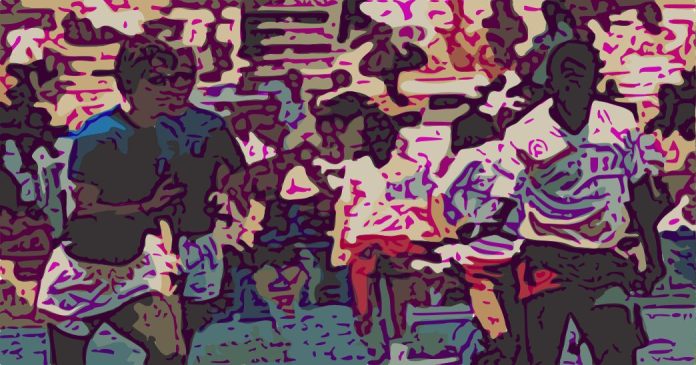When Bruno Labbadia took over from Martin Schmidt in February 2018, Wolfsburg were only a point above the relegation play-offs zone. They finished the season at 16th position in the league, barely managing to stay in the Bundesliga. A year later, we look at the same team – who’re now seventh in the league and in contention for the 2019/20 Europa League.
The change is all there to see. In the previous season, they’d scored a total of 36 goals and conceded 48, while this year they’ve already scored 44 and have conceded only 39. If we look a little closer, we’ll also notice an upsurge in their shot volume from 10.32 to 12.46, while the number of shots they’ve conceded has normalised at 10.3.
A closer look at their xG difference, however, tells us the truest version of the story. Wolfsburg had an xGD of -11.4 in 2017/18 while this season it is at 0.123. What has Labbadia done to steady the ship and put them safely in the mid-table spot when they were in tumultuous waters just a few months ago? Let’s find out.
Building out from the back
Labbadia’s most preferred formation is the 4-3-3. He’s used it the maximum number of times this season and it is the one worth talking about. He likes his team to play possession-based football which is attacking in nature. The players’ positions on the pitch mirror their lineups for the most parts, although he does have some interesting tactics which we’ll discuss as well.
The centre-backs (John Brooks and Robin Knoche) are usually the base of the team and most of the possession is circulated via them. The full-backs (Jerome Roussillon and William) usually move up high and overlap with their wingers (Josip Brekalo and Renato Steffen). The interior midfielders – Yannick Gerhardt and Maximillian Arnold – either operate in the channels as eights or play a hybrid 8/10 role, while the deepest midfielder is usually Joshua Guilavogui – the one who carries the ball out of the play.
The winger drifts out wide when the near-side fullback has the ball and the striker – Wout Weghorst – acts as the focal point for long balls. These are all the characteristics of a standard 4-3-3 and Wolfsburg do this to the T as they have the personnel to play all of the roles required in the system.

[Note: The players mentioned are the ones who’ve played the maximum minutes]
During build-up, Labbadia likes his centre-backs to split up on either side of their box. However, the goalkeeper doesn’t directly play to them; instead opting to play a straight pass to the holding midfielder, who drops to receive. The purpose of this pass is to attract the opposition to press them. If they take the bait, then the goalkeeper – upon receiving the ball again – plays it to the advanced midfielders who are expected to occupy the space which should theoretically open up due to the press of the opponent.
If the opponent refuses to engage them, then the holding midfielder has space to turn and pick his passing options. Often times, if the opponent is pressing in an unsystematic manner, the midfielder can play a first-time pass to the full-back who then has acres of space to carry the ball.

Counter-movements and the inverted fullback
When faced with a low block who refuse to cede space in the central areas, Labbadia uses an innovative technique. The concept of achieving numerical superiority is key behind this plan. The full-back – almost always the left-sided Roussillon – moves into midfield to overload the opposing midfielder.
This opens up space for his teammates, which is then exploited via a line-breaking pass or a through ball. Often times, Roussillon’s movement is countered by his winger’s or the left-sided midfielder’s dropping movement on the touchline. This further ensures that the structure remains intact and in case of turnovers, the team doesn’t suffer defensively.

When Wolfsburg face opponents who don’t press aggressively, they can afford to push up their advanced midfielders. Their 4-3-3 almost resembles a 2-3-5 in that case, with the centre-backs, the defensive midfielder, and fullbacks holding their positions while the advanced midfielders and forwards are concerned with creating chances.
This is not uncommon at Manchester City where the structure sometimes ends up resembling two blocks of five players each – one tasked with attacking and the other tasked with regaining possession and providing support. Indeed, many principles of attacking football used by Labbadia are also ones used by Pep Guardiola.
Diagonal balls
Wolfsburg are ranked first in the Bundesliga in playing long balls. This is no mean feat considering teams like Bayern Munich also play a style of football which requires them to play diagonal balls to find their wingers in 1v1 situations.
In Weghorst, they have an excellent target man, who can win long balls and hold up play. Brekalo or Admir Mehmedi especially benefit from this, as they can make use of the holes left in the defence when the centre-backs follow Weghorst.
Weghorst can then play them in, or lay the ball off to a midfielder who can then dribble past himself. However, Wolfsburg seldom go long as they’re keen on building out from the back and then exploiting space. Most of their long balls are diagonals played by the centre backs (Brooks or Knoche) to the wingers or full-backs who occupy wide areas.

Eight/ten hybrid midfielders
As mentioned earlier, Wolfsburg usually are very keen on pushing their midfielders high up the pitch. Here the midfielders can either exploit the area in between the opposition’s backline and midfield or stretch the backline. Although, a risky style of play, it has its benefits.

Off the ball, the midfielders usually occupy the half-spaces. This gives them small pockets of space to operate in and collapses the opponent’s defensive structure. It further has the additional benefit of attracting the opposition midfielders.
They’re wary of leaving their men behind and hence don’t push up to press the ball-carriers. This gives the Wolfsburg defenders time and space to pick out their passes or venture ahead with the ball themselves.
The midfielders also sometimes stay right on the shoulder of the opposition centre backs, almost becoming false forwards. This overloads their last line and creates spaces for through balls. It also creates spaces on the flanks. If, for instance, Arnold occupies the channel between the centre back and full back, it attracts both of them infield which opens up space for Roussillon.
Defensive transitions and pressing
Another change brought about by Labbadia has been the focus on pressing out-of-possession and counter-pressing. To understand the effect that the new management has had on Wolfsburg in just a short span of time, we could look at their PPDA numbers.
Wolfsburg in 2017/18 were the last in the Bundesliga in terms of pressing. Their PPDA numbers were the highest among all of the other clubs. However, this season their rank has significantly improved and they now sit in fifth position. This is an immense change in style and could very well be one of the reasons for their success.

PPDA on its own doesn’t tell us about how well a team presses or how concerted a press is. Wolfsburg usually sit off when the goalkeeper or the centre-backs have the ball. They act on certain triggers and its then that we can see the work put into improving this area of their play out of possession.
Wolfsburg sit in their 4-3-3 medium block when the opposition’s defenders have the ball at their feet. They maintain compactness in the middle and try to force their opponent to shift the ball out wide. Once the centre back passes the ball to the fullback, the winger rushes in to close him down.
The near-sided midfielder tracks the run of the opponent’s midfielder in case of a hopeful ball over the top. Seeing no forward option, when the fullback passes backwards, the striker then closes him down at speed. The centre back can only clear it or pass it backwards. In case of the latter, all of Wolfsburg’s front three and two interior midfielders move up to press the goalkeeper.
In case the opponent is successful in playing through the press, Wolfsburg fall into their defensive shape. The forwards – especially Weghorst is exceptionally good at blind-side tackling and under Labbadia, they’ve perfected the art of curving their press in order to tackle the opponent or at least direct the pass where their team is better equipped to handle it.
During transitions, Wolfsburg hold a high line. In case an attack breaks down, they press with their holding midfielder to ensure that the player on the ball doesn’t have time to turn and simultaneously, their own team can form their defensive block and take up their respective positions.
Defensive organisation
Wolfsburg defend in a 4-5-1 as it naturally transitions from their 4-3-3. Against Bayern Munich, for example, they fell into a low block with only Weghorst as the lone striker. The wingers tucked inside and were tasked with marking Munich’s fullbacks. The three interior midfielders usually were man-to-man with their respective midfielders. Guilavogui marked James Rodriguez while Arnold and Gerhardt marked Thiago and Javi Martinez respectively.
They usually focus on defending the space and move as a compact unit with minimum spaces in between lines. On the flanks, the full back is supported by the closest midfielder, and winger while the centre back stays behind to check for diagonal runs.
Wolfsburg’s defence of their own box still leaves a lot to be desired. They allow an average of 6.8 shots from within their own box and one shot from inside the six-yard box every match. It is not uncommon to see their centre backs or full backs being undone by a winger’s run from the far post following a cross.
During offensive transitions, they look to hit the opponent with pace using the excellent dribbling ability of Arnold and hold-up play of Weghorst.

Conclusion
Wolfsburg are moving from strength to strength under Labbadia. Their defensive work needs a lot of work as they concede a lot of high-quality shots. However, just that they’re able to be talked about in the same sentence with the best teams of Bundesliga is a testament to their progress.
Furthermore, at this point of time, they’re one of the best teams among the mid-table teams in the German league. Their next match is against Borussia Dortmund and will be a stern test for Labbadia and his men. With his contract set to expire this summer and no talks of an extension, Wolfsburg couldn’t have asked for a better transition manager to see them through the troubled phase.
If you love tactical analysis, then you’ll love the digital magazines from totalfootballanalysis.com – a guaranteed 100+ pages of pure tactical analysis covering topics from the Premier League, Serie A, La Liga, Bundesliga and many, many more. Buy your copy of the March issue for just ₤4.99 here, or even better sign up for a ₤50 annual membership (12 monthly issues plus the annual review) right here.


